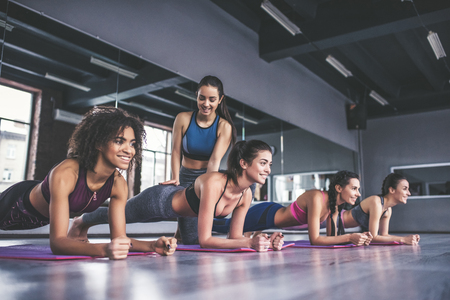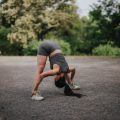Understanding the Needs of British Elderly Groups
When considering how to adapt traditional exercises like Tai Chi and Yoga for elderly groups in the UK, it is crucial to first understand the specific needs of older adults within this context. The British climate, with its frequent rain, chilly winds, and unpredictable weather patterns, means that many seniors are less likely to engage in outdoor activities year-round. This necessitates a flexible approach to exercise venues, often favouring indoor community spaces or sheltered areas within parks.
British elderly populations also present unique social and emotional characteristics shaped by local culture and community structures. Many older adults in the UK value their independence but can be at risk of social isolation due to dispersed family units and changes in neighbourhood dynamics. Community centres, church halls, and local clubs often serve as important hubs for connection, making them ideal settings for group activities that foster both physical wellbeing and social interaction.
Emotionally, there is a growing awareness of the importance of mental health among British seniors. With increased public conversations around loneliness, anxiety, and depression in later life, any exercise programme should aim not just to improve physical fitness but also to offer psychological benefits—such as relaxation, mindfulness, and a sense of belonging. Understanding these layered needs provides a strong foundation for thoughtfully adapting practices like Tai Chi and Yoga so they resonate with British elderly participants and fit seamlessly into their everyday lives.
Benefits of Traditional Exercises: Tai Chi and Yoga
For many British seniors, maintaining both physical and mental health becomes increasingly important with age. Tai Chi and Yoga, rooted in Eastern traditions but now popular worldwide, offer a holistic approach to wellbeing that aligns well with the needs of older adults in the UK. These practices have been shown to support not only mobility and flexibility but also mental clarity and emotional resilience—key factors for healthy ageing.
Physiological Benefits for Ageing Bodies
As we age, issues such as reduced bone density, joint stiffness, balance problems, and cardiovascular concerns become more prevalent. Both Tai Chi and Yoga address these challenges through gentle yet effective movements that are accessible to most seniors. Notably, their low-impact nature makes them suitable even for those with arthritis or limited mobility.
| Condition | Tai Chi Benefits | Yoga Benefits |
|---|---|---|
| Osteoarthritis | Improves joint flexibility and reduces pain through slow movements | Enhances range of motion with gentle stretching poses |
| Falls Prevention | Builds balance and proprioception through weight-shifting exercises | Strengthens core muscles and stability via standing postures |
| Cardiovascular Health | Lowers blood pressure and improves circulation by reducing stress | Supports heart health through breathwork and mindful movement |
| Respiratory Issues | Promotes deeper breathing patterns with flowing sequences | Teaches controlled breathing techniques (pranayama) |
Psychological Wellbeing: Mind-Body Connection
Mental health is just as vital as physical health for elderly people, particularly when facing loneliness, anxiety, or depression—issues that are unfortunately common among British seniors. Both practices foster mindfulness and a sense of community, which can be especially valuable in group settings like local community centres or care homes.
Mental Health Impact Table
| Mental Health Challenge | Tai Chi/Yoga Approach |
|---|---|
| Anxiety & Stress | Encourages relaxation response through focused breathing and slow movement |
| Cognitive Decline | Stimulates memory and concentration via coordinated sequences and meditation |
| Social Isolation | Provides opportunity for social engagement in group classes or clubs |
| Poor Sleep Quality | Improves sleep by calming the nervous system before bedtime sessions |
A Holistic Option for British Seniors
The beauty of integrating Tai Chi and Yoga into the lives of older Britons lies in their adaptability; routines can be modified for seated practice or tailored around specific medical advice. By embracing these traditional exercises within a familiar British setting—perhaps accompanied by a friendly cup of tea afterwards—communities can empower their elderly members to enjoy healthier, happier lives well into their golden years.
![]()
3. Cultural Adaptation: Making Tai Chi and Yoga Accessible
One of the key challenges when introducing traditional exercises like Tai Chi and Yoga to British elderly groups is ensuring that these practices feel both relevant and approachable. To truly make a difference, it’s essential to go beyond simply teaching routines as they are; instead, we should thoughtfully weave in familiar British elements, local language, and a touch of humour.
Incorporating British Elements
Start by choosing settings that resonate with participants—think community halls, church gardens, or even village greens, which echo the tranquillity of an English countryside. Use familiar music as background, such as gentle classical pieces by Elgar or folk tunes, to create a comfortable atmosphere. Even simple props like chairs for seated poses or cups of tea during breaks can help bridge the gap between East and West, making sessions less intimidating and more inviting.
Language Matters
Adapting instructions is crucial. Swap out complex Sanskrit or Mandarin terms for clear, everyday English. For example, instead of “Tadasana,” try “Mountain Pose,” and describe movements using analogies from daily British life—“Imagine you’re reaching for the biscuit tin on the top shelf.” It’s also helpful to slow down explanations and check for understanding, allowing everyone to feel included regardless of prior experience.
The Power of Humour
A light-hearted approach goes a long way in breaking down barriers. Injecting classic British wit—perhaps a gentle quip about balancing better than a weathered garden gnome—can relax participants and foster camaraderie. Sharing laughs over wobbly moments makes the practice less daunting and builds confidence within the group.
Modifying Routines for Local Preferences
Finally, it’s important to tailor routines to suit local abilities. Many older Brits may have joint issues or limited mobility; therefore, offer chair-based alternatives or shorter session times that still deliver benefits without overwhelming anyone. Encourage feedback after each class and adjust accordingly—after all, nothing embodies the spirit of British hospitality like listening attentively and adapting with care.
By blending tradition with familiarity, respect for heritage with openness to new experiences, Tai Chi and Yoga can become cherished parts of British elderly well-being—offering not just physical health benefits but also connection, enjoyment, and a sense of belonging.
4. Practical Examples and Success Stories
Real-life experiences from community centres and elderly clubs across the UK demonstrate how traditional exercises like Tai Chi and Yoga can be successfully adapted for British elderly groups. The following examples offer insight into what works and why, providing valuable lessons for others considering similar initiatives.
Case Study: Sheffield Silver Age Centre
The Sheffield Silver Age Centre introduced weekly Tai Chi sessions specifically tailored for their over-65 members. Initially, there was some scepticism among participants unfamiliar with Eastern practices. However, by partnering with a local instructor who had experience working with older adults and by adapting movements to suit mobility levels, attendance quickly grew. Within six months, not only did participants report improvements in balance and flexibility, but the centre also noticed a boost in social interaction among attendees.
Key Lessons Learned:
| Lesson | Details |
|---|---|
| Cultural Sensitivity | Instructors explained the origins of Tai Chi in relatable terms and drew parallels to familiar British activities, helping reduce initial resistance. |
| Accessibility | Sessions were designed to be chair-based or standing with support, making them inclusive for those with limited mobility. |
| Community Engagement | Regular feedback was sought from participants, leading to adjustments in session pace and content. |
Anecdote: Greenwich Golden Years Club Yoga Initiative
At the Greenwich Golden Years Club, a pilot yoga project began after members expressed interest in gentle stretching exercises. The organiser collaborated with a yoga teacher who integrated familiar British folk music into relaxation sessions and encouraged participants to share personal wellness tips. The group soon became one of the club’s most popular activities. Members highlighted how learning breathing techniques improved their confidence in managing daily stresses and minor aches.
What Stood Out?
- Personalisation: Customising sessions around participant preferences increased engagement.
- Peer Support: The sense of camaraderie developed during group practice led to friendships beyond class time.
- Visible Progress: Tracking small milestones—like ease of movement or ability to stand unaided—motivated continued participation.
Together, these stories underscore that successful adaptation is about more than just translating movements; it’s about embedding exercises into local culture, listening closely to the needs of British elders, and creating welcoming environments where everyone feels valued and capable.
5. Overcoming Common Barriers in British Communities
When introducing traditional exercises like Tai Chi and Yoga to British elderly groups, it’s vital to acknowledge and address the unique challenges these communities face. Identifying barriers such as unpredictable weather, transportation issues, and cultural perceptions towards Eastern practices is the first step toward successful adaptation and participation.
Weather Limitations
The famously variable British weather can discourage outdoor sessions, particularly for older adults who may be more vulnerable to cold or damp conditions. To counter this, consider organising classes in accessible indoor venues such as local community halls, church rooms, or sheltered gardens. These spaces not only provide a comfortable environment but also foster a sense of belonging and continuity. Additionally, offering online sessions during harsh weather spells can help maintain regular practice without disruption.
Transportation Challenges
Many elderly participants may have limited mobility or lack easy access to public transport. To make classes more accessible, coordinate with local councils or volunteer groups to arrange community transport schemes. Alternatively, setting up exercise sessions within walking distance of residential areas—perhaps at GP surgeries or sheltered housing complexes—can encourage greater attendance and reduce reliance on long commutes.
Attitudes Towards Eastern Practices
Some British seniors may initially view Tai Chi and Yoga as foreign or unfamiliar. Building trust through clear communication is essential. Emphasise the health benefits—such as improved balance, flexibility, and mental wellbeing—using relatable success stories from local peers. Adapt class language by using English terms alongside traditional names and explain movements in familiar contexts. Inviting British instructors trained in these disciplines or running introductory workshops focused on demystifying the practices can further ease apprehensions.
Practical Solutions that Work
The key to overcoming these barriers lies in listening actively to participants’ concerns and adapting approaches accordingly. This might mean providing flexible schedules, offering trial sessions, or integrating social elements like tea after class to reinforce a sense of community. By proactively addressing these common obstacles with empathy and practical solutions rooted in British culture, we create welcoming environments where elderly individuals feel valued and empowered to embrace these enriching traditions.
6. Building Sustainable Exercise Communities
For British elderly groups to truly benefit from adapted exercises like Tai Chi and yoga, it’s essential to look beyond single sessions and focus on creating sustainable, welcoming communities. Longevity in participation comes from making classes more than just physical activity—they must become social hubs where seniors feel valued, supported, and connected. Here are several strategies that have proven effective through practical experience and community feedback.
Establish Regular Routines
Consistency is key. Set a regular weekly schedule for classes so seniors can plan ahead and make attendance part of their routine. Host sessions at familiar local venues such as community centres, church halls, or libraries, which are easily accessible by public transport or within walking distance. This sense of familiarity and predictability reduces barriers and anxiety for newcomers.
Encourage Social Interaction
Foster a friendly atmosphere by allowing time before and after each session for tea, biscuits, and conversation—a staple of British community gatherings. Organise occasional group outings or themed days around cultural festivals or local events to deepen bonds. Recognise birthdays or personal milestones to help participants feel seen and appreciated.
Empower Peer Support
Train interested group members as volunteer assistants or “exercise buddies.” These peer leaders can welcome new participants, offer encouragement during sessions, and help with demonstrations. Their involvement not only boosts confidence but also creates a sense of shared ownership within the group.
Leverage Local Partnerships
Collaborate with local health practitioners, charities, and councils who can provide resources or co-host special workshops on topics relevant to senior wellbeing—such as fall prevention or mindfulness. These partnerships add credibility, attract new participants, and demonstrate commitment to holistic health.
Maintain Open Communication
Create simple newsletters—either printed or digital—to keep everyone informed about class schedules, upcoming events, and health tips. Encourage feedback through informal chats or anonymous suggestion boxes, showing that everyone’s voice matters in shaping the community’s direction.
By thoughtfully combining tradition with local culture and focusing on ongoing support, we can transform exercise classes into vibrant communities that nourish both body and spirit for British seniors. The goal is not just movement but meaningful connection—a legacy that lasts well beyond any single session.


